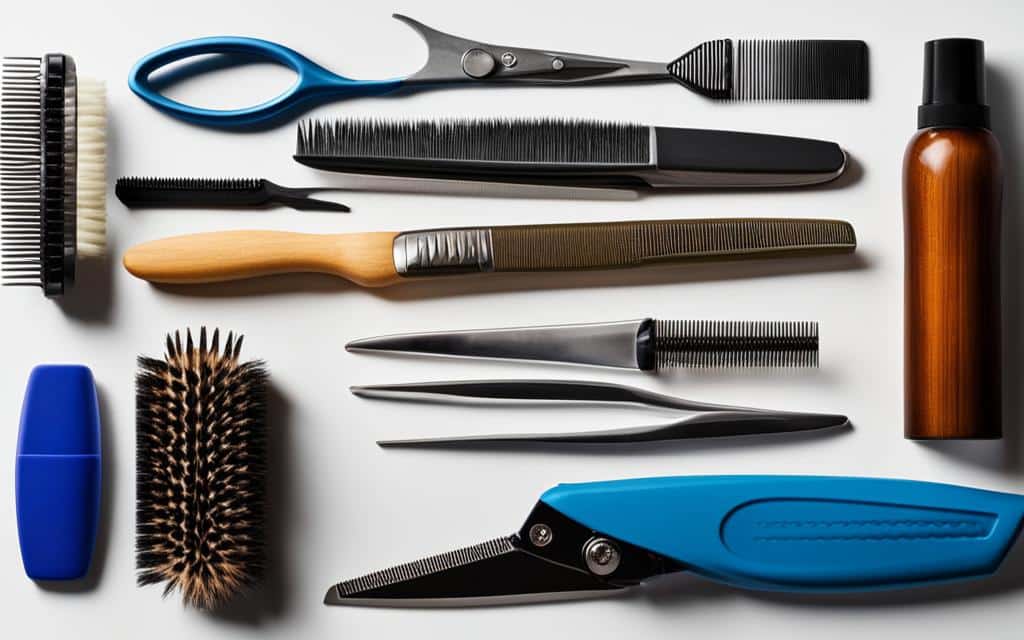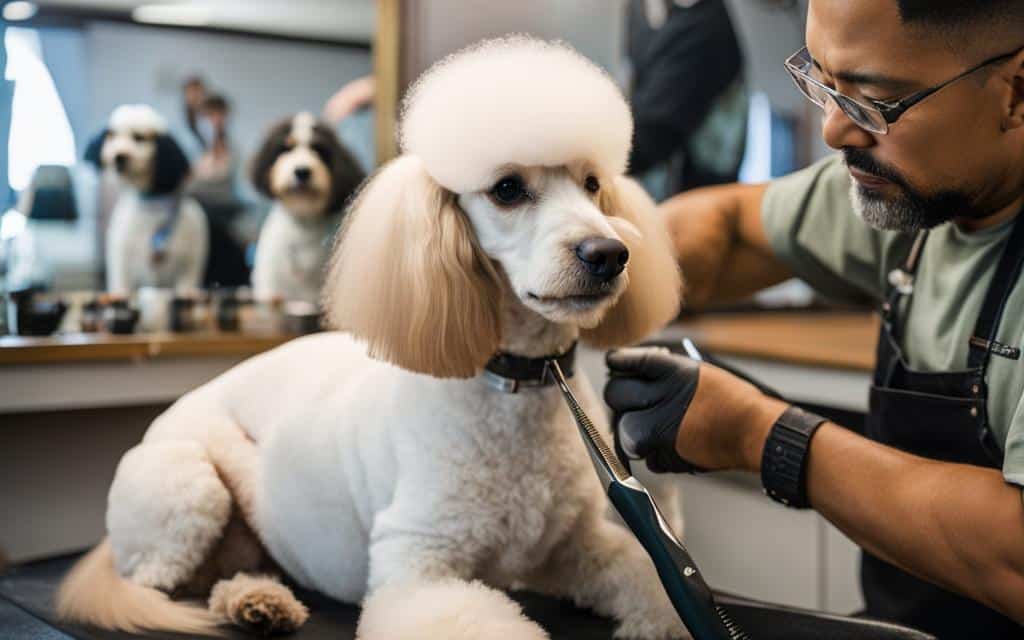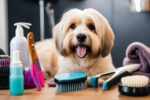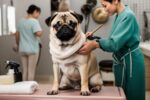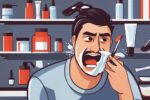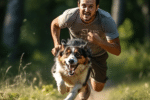Dog Grooming Basics: Mastering the Essentials for a Happy Pup
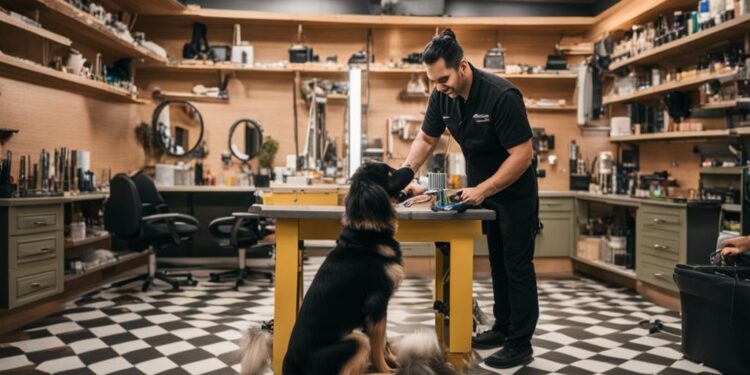
Welcome to our comprehensive guide on pet grooming essentials. As a responsible pet owner, it’s crucial to ensure your furry friend’s maintenance is a top priority. Canine hygiene is vital to keeping dogs healthy and happy. Regular grooming also promotes a bond between you and your pet.
In this guide, we will discuss the basics of dog grooming, from proper maintenance practices to essential tools and techniques you need to keep in mind. Cleaning your dog requires more than just a quick scrub down in the shower. With our guide, you will learn the key aspects of basic dog care and how to perfect your pet’s grooming routine to ensure optimal health and hygiene.
Keep reading to discover some game-changing tips and tricks for maintaining your pup’s hygiene and overall well-being. Whether you’re a first-time owner or a seasoned pro, this guide will elevate your grooming skills to the top of your class.
Understanding the Importance of Dog Grooming
Proper grooming is a crucial aspect of canine hygiene and basic dog care. It’s not just about keeping your furry friend looking adorable; it’s also about maintaining their overall well-being. Regular grooming can help prevent skin infections, matting of fur, and other issues that can cause discomfort to your dog.
Grooming also involves physical contact with your dog, creating a strong bond between you and your pet. Regular grooming ensures that your dog feels loved and cared for, helping you to notice any changes in your pet’s physical condition before it becomes a serious issue.
One of the most significant benefits of dog grooming is improved skin and coat health. Proper grooming can help in the redistribution of natural oils throughout the coat, preventing skin dryness and dandruff. Moreover, it helps in preventing tangles and mats, leading to healthy and shiny fur.
Maintaining Canine Hygiene through Proper Grooming
Grooming plays a critical role in canine hygiene, which is vital for your pet’s overall health. Poor hygiene can lead to the development of various health issues and diseases. Regular grooming can help prevent bacterial and fungal infections, ear infections, and bad breath that can occur due to a buildup of bacteria in the mouth.
Moreover, proper grooming also helps in checking for skin irritations, skin infections, and parasites such as ticks, fleas, and mites that can cause discomfort for your pet. Through proper ear, paw, and nail care, grooming can aid in the early detection of infections or other persistent conditions.
“Grooming helps the dog’s physical well-being, as well as their mental health. When you groom, you are giving them a massage. Dogs love that it feels good, and it helps them relax.” – Cesar Millan
In summary, regular grooming is a crucial aspect of basic dog care. By maintaining proper canine hygiene, you can ensure that your furry friend stays healthy, happy, and content.
Essential Dog Grooming Supplies
Having the right tools and products is crucial for ensuring an effective and enjoyable grooming experience for both you and your furry companion. Here’s an overview of the pet grooming essentials you should have in your kit:
| Grooming Tool | Description |
|---|---|
| Brushes and Combs | Choose the appropriate brush or comb based on your dog’s coat type and length. For example, slicker brushes work well for detangling long hair, while bristle brushes are great for short-haired dogs. Combs are ideal for removing dead hair and preventing matting. |
| Dog Shampoo | Only use shampoos that are specifically formulated for dogs, as human shampoos can be harsh and irritating to their skin and coat. Look for natural ingredients and avoid products that contain harsh chemicals. |
| Nail Clippers | Invest in a quality pair of nail clippers that are designed for dogs to trim your pet’s nails safely. Take care not to cut the quick (the pink part of the nail that contains blood vessels), which can cause pain and bleeding. |
| Ear Cleaner | Dog ear cleaners help remove wax and debris from your pet’s ears and prevent infections. Be mindful not to insert the applicator too deep into your dog’s ear canal, which can damage their eardrum and cause pain. |
| Blow Dryer | Invest in a quality blow dryer designed for pets to efficiently dry your dog’s coat after a bath. Always use a low-heat setting to prevent burning their skin and avoid blowing the air directly into their face or ears. |
| Styptic Powder | In case you accidentally cut your dog’s nails too short and cause bleeding, styptic powder can help stop the bleeding quickly. |
| Dental Care Products | Good dental care is crucial for your dog’s overall health, so invest in toothbrushes, toothpaste, and dental chews specially designed for dogs to keep their teeth and gums healthy. |
Incorporating these essential pet grooming supplies into your routine will help you keep your dog healthy, happy, and looking their best. Don’t skimp on quality and invest in the tools that work best for your dog’s individual needs.
Brushing Techniques for a Healthy Coat
Regular brushing keeps your dog’s coat healthy, shiny, and tangle-free. Here are some brushing techniques that you can follow to ensure your canine companion’s coat is in excellent condition:
- Know your dog’s coat type: Before starting the brushing session, it is important to determine the type of coat your dog has. Dogs can have smooth, short, long, curly or wiry coats; each type requires different brushing tools and techniques.
- Brush regularly: Regular brushing of your dog’s coat, at least once a week, is necessary to remove any dead hair and debris that could lead to skin irritation or infection.
- Use the right brush: Investing in the right brushes that suit your dog’s coat type is essential. For instance, a slicker brush and a metal comb are ideal for long-haired dogs while short-haired dogs can benefit from a bristle brush.
- Start brushing from the head: Start brushing from your dog’s head and work your way down to the rest of the body. Be gentle, and do not tug or pull at your dog’s hair; it could cause pain or discomfort.
- Check for mats and tangles: Check your dog’s coat for any mats or tangles while brushing, especially in areas with long hair. Gently separate the mats with your fingers before brushing them out.
- Reward your dog: Reward your dog with treats during the brushing session, and use a calming voice to make the experience more enjoyable for them.
To summarize, brushing is an essential part of canine hygiene and basic dog care. It keeps your dog’s coat healthy and tangle-free, while also strengthening your bond with your furry friend.
Bathing Your Dog: Tips and Tricks
Proper bathing is essential for maintaining your dog’s canine hygiene. Not only does it keep them clean, but it also helps to prevent skin infections and keeps their coat healthy.
Choosing the right pet grooming essentials is crucial when it comes to bathing your dog. Use a shampoo specifically formulated for dogs, as human shampoo can be too harsh and cause skin irritation. Adjust the water temperature to be warm but not hot, and make sure to rinse thoroughly to avoid any irritation from leftover soap residue.
Drying your dog is just as important as the bath itself. Use a towel or blow dryer on a low heat setting to avoid burning their skin. If your dog is afraid of water or bathing, try to make it a positive experience by offering treats or toys to distract them.
Keeping up with regular baths is an essential part of your dog’s grooming routine, but it’s equally essential to not overdo it. Too much bathing can strip your dog’s coat of its natural oils, leading to dry and itchy skin. Depending on your dog’s activity level and coat type, aim to bathe them every 4-6 weeks.
Nail Care and Paw Maintenance
Proper nail care is crucial for your dog’s health and well-being. Overgrown nails can be painful, and long nails can cause problems with walking or running. Regular nail maintenance will help avoid these issues and promote your dog’s physical health.
When trimming your dog’s nails, be sure to use a quality pair of dog nail clippers and follow these steps:
- Gently hold your dog’s paw and identify the quick, which can be seen from under the nail. Avoid cutting the quick, as it contains blood vessels and can cause bleeding.
- Trim the nail to just below the quick. If your dog has dark nails and you cannot see the quick, trim a little at a time to avoid accidentally cutting it.
- Smooth out any rough edges or sharp points with a nail file to prevent snagging or scratching.
Aside from nails, paw pads are also an important part of your dog’s overall foot health. Here are some additional tips for maintaining healthy paws:
- Regularly check your dog’s paw pads for cuts, splinters, or foreign objects. Remove any debris to prevent infection.
- Clean your dog’s paws after walks, especially in the winter when salt or other chemicals can irritate the skin.
- Apply a paw balm or moisturizer to keep paw pads supple and prevent cracking.
- If your dog shows signs of discomfort or limping, consult with your veterinarian to rule out any underlying health issues.
Remember, taking care of your dog’s nails and paws is essential for their overall health and well-being.
Ear and Dental Care for Dogs
Proper ear and dental care are essential components of canine hygiene and basic dog care. Neglecting these areas could lead to serious health issues and discomfort for your furry friend. Here are some tips for maintaining your dog’s ear and dental health:
Ear Care
The first step in preventing ear problems is regular cleaning. Check your dog’s ears once a week for signs of redness, swelling, or discharge. Use a cotton ball and a gentle cleaning solution recommended by your veterinarian to clean the outer ear, avoiding the ear canal. Do not insert anything into the ear canal, as this could cause injury or infection. Seek veterinary care if you notice persistent ear issues.
“Keeping your dog’s ears clean and healthy is an essential part of being a responsible pet owner.”
Common dog ear problems include:
| Problem | Symptoms |
|---|---|
| Ear Infections | Odor, discharge, redness, swelling, head shaking, or scratching at the ear. |
| Ear Mites | Dark discharge, head shaking, or scratching at the ear. |
| Foreign Objects | Tilting of the head, head shaking, or scratching at the ear. |
Dental Care
Periodontal disease is a common health issue in dogs that can lead to bad breath, tooth loss, and other health problems. Regular dental care can help prevent periodontal disease and maintain your dog’s overall health. Here are some tips:
- Brush your dog’s teeth regularly with a toothbrush and toothpaste recommended by your veterinarian.
- Provide dental chews and toys to help keep your dog’s teeth healthy and clean.
- Schedule regular dental check-ups with your veterinarian.
Common signs of dental problems include bad breath, yellow or brown teeth, and difficulty eating or chewing.
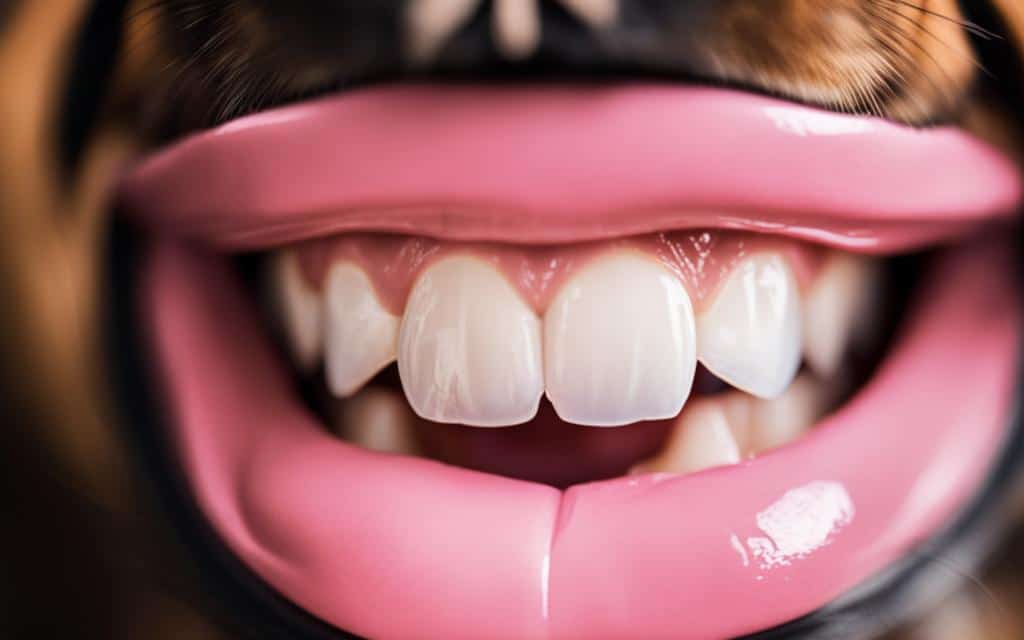
Regular ear and dental care are crucial for maintaining your dog’s hygiene and health. By following these tips and seeking veterinary care when necessary, you can help ensure a happy and healthy life for your furry companion.
Dealing with Shedding: Tips and Strategies
Shedding is a natural process for dogs that can often lead to excessive hair accumulation in your home. However, with proper grooming techniques and a few practical strategies, you can effectively manage and minimize shedding. Here are some tips:
1. Brush Your Dog Regularly
Regular brushing is one of the most effective ways to manage shedding. It helps to remove loose hair before it falls out and reduces the amount of hair your dog sheds. For optimal results, use a brush that’s suitable for your dog’s coat type. Long-haired breeds will require a slicker or pin brush, while short-haired breeds are best suited for a bristle brush. Brush your dog at least once a week, or more frequently if your dog sheds excessively.
2. Bathe Your Dog with Appropriate Products
Bathing your dog too often can strip their coat of essential oils, which can lead to excessive shedding. Use a mild shampoo specifically formulated for dogs, and avoid using human shampoos, as they can be harsh on your dog’s skin and coat. Be sure to rinse your dog thoroughly to remove all shampoo residue, which can attract dirt and lead to further shedding.
3. Provide a Balanced Diet
A balanced diet with appropriate pet grooming essentials can help to minimize shedding by promoting healthy skin and a shiny coat. Feed your dog a high-quality dog food that’s rich in essential nutrients, such as protein, omega-3 fatty acids, and vitamins. Consult with your veterinarian to determine the best diet for your dog’s specific needs.
| Grooming Tip | Description |
|---|---|
| Use a Deshedding Tool | Deshedding tools can be a highly effective way to remove loose hair before it falls out. These tools are designed to remove the undercoat without damaging the topcoat. They work by grabbing onto loose hair and pulling it out, which can significantly reduce shedding. |
| Keep Your Home Clean | One of the most practical ways to deal with shedding is to keep your home clean. Vacuum your floors and furniture frequently, and use a lint roller to pick up hair from your clothing. Consider using a cover for your furniture or your dog’s favorite spots to reduce hair accumulation. |
| Consult with Your Veterinarian | If your dog sheds excessively, it could be a sign of an underlying health issue. Consult with your veterinarian to rule out any potential health problems, such as allergies or thyroid issues. |
By using a combination of these grooming techniques and strategies, you can effectively manage excessive shedding and maintain a hygienic, pet hair-free home. Always consult with your veterinarian if you have any concerns about your dog’s health, coat, or shedding patterns.
Grooming Specific Breeds and Coat Types
While proper grooming is essential for all dogs, different breeds and coat types require specific techniques. Ensuring you’re using the right grooming practices based on your dog’s unique characteristics will help you maintain your pet’s overall health and hygiene. Below, we’ve listed some popular breeds and coat types with grooming tips to help you keep your furry friend looking and feeling their best.
Short-Haired Breeds
Short-haired breeds, such as Dalmatians and Boxers, generally require less grooming than other breeds. However, they can still benefit from weekly brushing to reduce shedding and keep their coats shiny. To combat any odor or dirt buildup, consider bathing your dog every four to eight weeks.
Grooming Tip: Choose a gentle shampoo formulated specifically for dogs with sensitive skin to prevent any irritation or discomfort.
Long-Haired Breeds
Long-haired breeds, like Shih Tzus and Maltese, require more frequent grooming than short-haired breeds due to the potential for matting and tangling. These breeds benefit from daily brushing and may require professional grooming every four to six weeks. This includes trimming around the paws, ears, and tail to ensure the dog’s vision and movement are never impaired.
Grooming Tip: Using a detangling spray can make brushing easier and prevent hair breakage.
Curly-Coated Breeds
Breeds such as Poodles and Bichon Frises with curly coats require frequent grooming to prevent matting and tangling. Daily brushing and professional grooming every four to six weeks are recommended for these breeds to keep their coats in top condition.
Grooming Tip: Consider leaving the coat longer around the legs and tail for a unique appearance but trimmed shorter around the face for better visibility.
Conclusion
Mastering the basics of dog grooming is essential for every pet owner to ensure their furry friend’s health, hygiene, and overall well-being. By following the tips and techniques outlined in this guide, you can create a perfect grooming routine for your pet. Remember to prioritize canine hygiene through regular brushing, bathing, nail, dental, and ear care. Choose the appropriate grooming tools and products, and always use gentle and non-toxic shampoos and conditioners.
Moreover, understanding the importance of grooming and its benefits is crucial in maintaining a strong bond with your pet and preventing infections and health issues.
Always consider your dog’s breed and coat type for specific grooming techniques and seek professional help if necessary. By providing your furry friend with proper grooming care, you can ensure they have a happy, clean, and content life.
Let these dog grooming basics be your stepping stones towards becoming a responsible and caring pet owner.
FAQ
What is the importance of proper dog grooming?
Proper dog grooming is essential for maintaining your dog’s overall well-being. It helps improve skin and coat health, prevents infections, and promotes a strong bond between you and your furry friend.
What are the essential dog grooming supplies I need?
The essential dog grooming supplies include brushes, combs, shampoos, nail clippers, and more. These tools will make your grooming sessions efficient and convenient.
How often should I brush my dog’s coat?
The frequency of brushing depends on your dog’s coat type. Generally, dogs with longer hair may require daily or weekly brushing, while dogs with shorter hair can be brushed once or twice a month. Consult your veterinarian for specific guidance.
How do I properly bathe my dog?
When bathing your dog, choose the right dog shampoo, maintain the ideal water temperature, and use appropriate drying methods. If your dog is fearful of water, introduce them gradually to bathing and provide positive reinforcement during the process.
How do I trim my dog’s nails?
Trimming your dog’s nails should be done carefully to avoid injury. Use proper nail clippers and follow a gradual trimming approach. Be aware of the quick inside the nail and trim a little at a time. If you’re unsure, consult a professional groomer or veterinarian.
How can I maintain my dog’s ear and dental health?
To maintain your dog’s ear health, clean the ears regularly with appropriate cleaning solutions. For dental care, brush your dog’s teeth regularly with dog-specific toothpaste and provide dental chews or toys to help prevent oral health issues.
How can I minimize shedding in my dog?
To manage shedding, brush your dog regularly using appropriate brushing techniques. Provide a balanced diet with proper nutrition, and consider adding supplements that support coat health. Additionally, make sure to keep your home clean by vacuuming frequently and using lint rollers.
Are there specific grooming techniques for different dog breeds and coat types?
Yes, different breeds and coat types require specific grooming techniques. For example, dogs with curly coats may require regular trimming, while long-haired breeds may need frequent brushing to prevent matting. Research breed-specific grooming tips or consult professional groomers for guidance.
Where can I find more information about dog grooming basics?
For more information about dog grooming basics, consult reputable pet care resources, such as books, online articles, or trusted veterinary websites.
